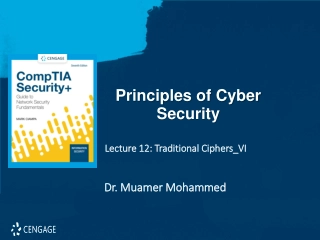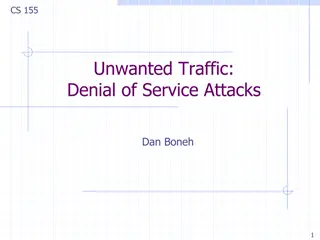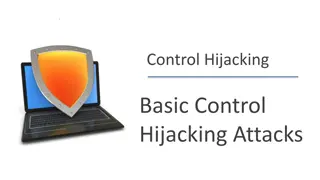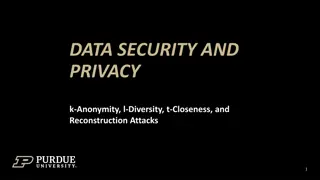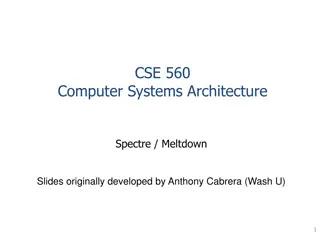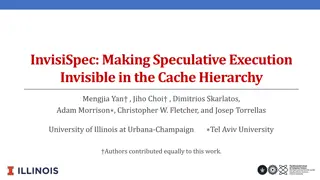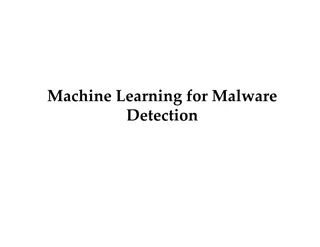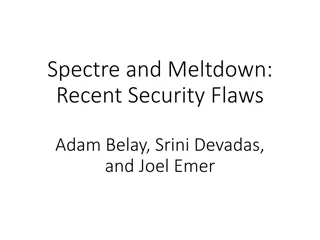Understanding Meltdown and Spectre Attacks: An Overview
Delve into the world of cybersecurity with a detailed exploration of the Meltdown and Spectre attacks, their implications, and innovative techniques like using CPU cache for memory retention. Discover how out-of-order execution and security room setups play crucial roles in safeguarding sensitive information.
Download Presentation

Please find below an Image/Link to download the presentation.
The content on the website is provided AS IS for your information and personal use only. It may not be sold, licensed, or shared on other websites without obtaining consent from the author. Download presentation by click this link. If you encounter any issues during the download, it is possible that the publisher has removed the file from their server.
E N D
Presentation Transcript
Overview An analogy CPU cache and use it as side channel Meltdown attack Spectre attack
Stealing A Secret Secret: 7 Guard with Memory Eraser Restricted Room
From Lights to CPU Cache Question You just learned a secret number 7, and you want to keep it. However, your memory will be erased and whatever you do will be rolled back (except the CPU cache). How do you recall the secret after your memory about this secret number is erased?
The FLUSH+RELOAD Technique Secret S FLUSH: Flush the CPU Cache RELOAD: Check which one is in the cache Access memory location at S
FLUSH+RELOAD: The FLUSH Step Flush the CPU Cache
Out-of-Order Execution How do I prove that the out-of-order execution has happened?
Out-of-Order Execution Experiment Evidence of out-of-order execution
Improvement: Get Secret Cached Why does this help?
Improve the Attack Using Assembly Code Execution Results
Countermeasures Fundamental problem is in the CPU hardware Expensive to fix Develop workaround in operating system KASLR (Kernel Address Space Layout Randomization) Does not map any kernel memory in the user space, except for some parts required by the x86 architecture (e.g., interrupt handlers) User-level programs cannot directly use kernel memory addresses, as such addresses cannot be resolved
Will It Be Executed? Will Line 3 be executed if x > size ?
Lets Find a Proof size is 10 FLUSH Flush the CPU Cache RELOAD Training Train CPU to go to the true branch Invoke victim(97) Check which one is in the cache Evidence Not always working though
Target of the Attack This protection pattern is widely used in software sandbox (such as those implemented inside browsers)
The Spectre Attack spectreAttack(int larger_x)
Attack Result Why is 0 in the cache?
Spectre Variant and Mitigation Since it was discovered in 2017, several Spectre variants have been found Affecting Intel, ARM, and ARM The problem is in hardware Unlike Meltdown, there is no easy software workaround
Summary Stealing secrets using side channels Meltdown attack Spectre attack A form of race condition vulnerability Vulnerabilities are inside hardware AMD, Intel, and ARM are affected





